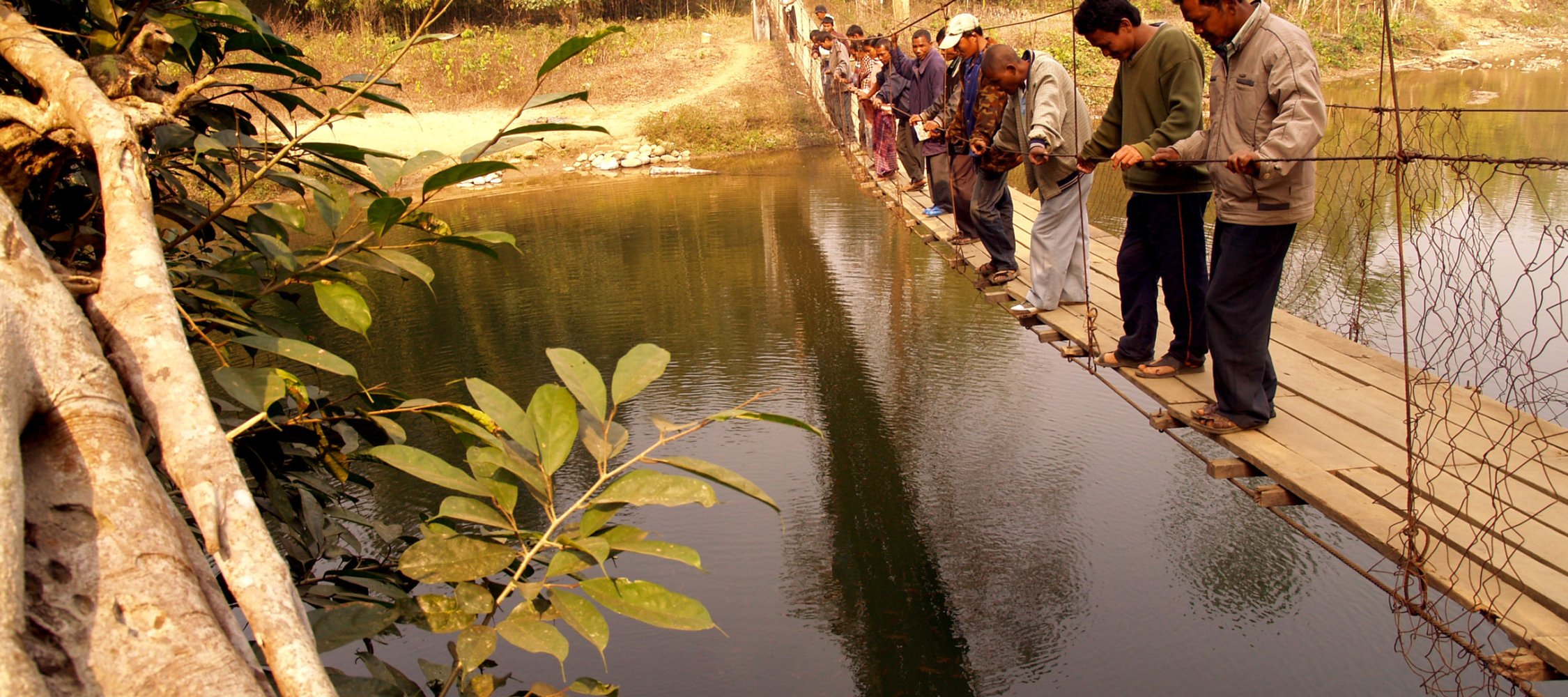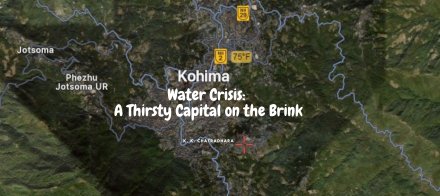 |
About a decade ago, before his untimely death, one of the regular weekend activities of Perry R. Marak, a young botanist belonging to the indigenous Garo tribal community, was to trek up the hills, walk by the streams and meet elders in villages perched across the famed Nokrek Biosphere Reserve (NBR) in western Meghalaya. It was a part of his professional work and personal interest. He was keen on documenting his community’s ancestral knowledge, which he said was gradually losing its importance in the name of so-called modernity.
Occasionally, he would invite like-minded friends to join him in this venture. He was then working as the natural resource management officer (NMRO) in an ambitious community-based natural resource management project jointly supported by the International Fund for Agricultural Development (IFAD) and the Government of India.
On several occasions, I joined Marak and his senior colleague Daniel Ingty travelling to remote villages across NBR. The biosphere reserve, which includes the Nokrek peak and the National Park, is said to be the original home of the mother of all citrus plants, Memang Narang (Citrus indica), and a paradise for botanists and wildlife biologists. The whole Nokrek hill range, which covers the entire biosphere, serves as the critical watershed for the whole of the Garo Hills. Two of the major rivers, Simsang and Ganol, and their numerous tributaries originate from the Nokrek range and flow down south to Bangladesh. The Nokrek range also joins the Baghmara-Balpakram conservation landscape in the south and southwest direction, which supports the highest density habitat of the Asian elephant population in Meghalaya, and the second-largest home after Assam in the Northeast region.
Apart from its rich forest and biodiversity, the biosphere is also known for its diverse wildlife habitats – reptiles (python and monitor lizard), birds (hornbill), butterfly and mammals (Hollock Gibbon, elephant, tiger, clouded leopard and various wild cat species including leopard cat and golden cat).
There are over 130 villages scattered around the biosphere reserve, inhabited by the indigenous Garo community, which lives and thrives amidst the bounty of nature. In one of my numerous visits to the Garo Hills, I was invited to an unusual meeting to witness a community decision-making process in a village, Nengmandelgre.
“It’s a relatively new settlement,” Jeckariash R. Marak, a village elder, informed us. He said the old village was a few kilometres away in the higher land surrounded by a dense forest with plenty of wildlife – tiger, elephant, black bear, and many other animals. “Our ancestors were forced to leave the settlement for a safer place. We could not graze our cattle or raise poultry because of frequent tiger attacks and elephant depredation,” he said. The villagers decided to move down to lower lands along the Chibok stream, one of the tributaries of the river Simsang.
Over the years, of course, Jeckariash R. Marak said, with a growing population and declining forest, all these animals disappeared. So, some people moved again closer to the old settlement. “The new settlement is over 30 years old, but no one has seen any tiger since they moved to the present location,” he added.
But it was not about the elephant or tiger attacks that brought us to Nengmandalgre; the village had a more serious issue at hand: The sudden disappearance of their most favourite native fish species, the na.rim and na.rong, from the local stream. So, the Nokma - the chief trustee of clan land of the Garo community – of Nengmandalgre called for a meeting of all the households to discuss the issue and formulate an action plan for the restoration of the fish sanctuary. The key question was: “Where have all our fishes gone? How could that happen?”
The question triggered an intense debate among the resident families of the village. For hours, speaker after speaker spoke of indiscriminate poaching, unscrupulous means of fishing, such as the use of dynamite or poisoning by using certain barks and plant roots, and theft of fishes from the local stream. Some of them pointed out the flouting of village rules regarding the management of the wari– the Garo traditional fish sanctuary for natural breeding purposes. A few others attributed the erosion of the traditional belief system and taboos – that once acted as useful tools for conservation – to their conversion to Christianity.
They said due to the neglect and indifference in the past decades, fish stocks in most of the hill streams dwindled very fast. It was like a wake-up call for the elders of Nengmandalgre when they realised that several of their favourite fish species, including the ones needed for rituals during the sowing season, vanished from the Chibok stream.
“In May-June, just at the onset of the monsoon, we used to notice a number of local fish species – na.rim, na.gitchak and na.rong, among others – swarming to the shallow waters of the Chibok stream for breeding,” Jackariash R. Marak recalled. “But these, too, became rare.”
"The wari system serves two basic purposes,” Perry R. Marak explained to us. “On the one hand, it provides a secure breeding place for fish population, and on the other, it helps replenish fish stock for sustainable harvest by the community.” Therefore, fishing is regulated and is allowed only once a year during the months of March-April when the sowing season begins. Some of the native fish species are used for ritual purposes invoking the spirit for a good harvest.
However, the regulating rules differed from place to place, Daniel Ingty, then the project manager, said. Some villages declared some sites in streams and rivers as ‘no-fishing zones’, while in other stretches of streams, fishing was allowed periodically by the community on the basis of fish stock assessment.
The Garos, like many other tribes in the Northeast, also have perfected various ingenious ways of fishing that include trapping and poisoning with wild plants and roots. The villagers would identify some portions of a stream where they would erect some barricades that slow down the flow of water. There, they would throw those wild plants, which have a poisonous effect on fish but are not harmful for human consumption. In some cases, dynamite or generators are used to temporarily paralyse the fish.
Unfortunately, Perry R. Marak said: “These practices completely deplete the fish fauna from the wild.” For years, he had been campaigning against such unscrupulous practices as well as trying to create awareness in the community about the problem. At the same time, he mobilised the community through a series of conversations on the traditional wari system and encouraged the community conservation efforts in the biosphere region, and documentation of indigenous knowledge of edible plants, leaves, and roots, and other non-timber forest produce in their respective areas.
After several rounds of discussions, the village assembly came up with a few key resolutions:
(1) Setting up of Nengmandalgre Village Development Council (NVDC) to initiate the process for revitalisation of the traditional wari in the Chibok stream;
(2) The identification of potential sites in the entire stretch of the Chibok stream that runs along the Nengmandalgre village;
(3) Banning all kinds of fishing within the identified wari sites in the stream;
(4) The NVDC will frame rules for the management of the wari, and notify dates for community fishing, as and when it deems appropriate; and finally, determine punitive actions against the offenders of the community rules. The assembly of the village endorsed the proposals and authorized the Nengmandalgre council to immediately start their work.
It was a memorable experience of community action! And that was probably in the year 2009. For the next few years, I continued to follow up the process with Perry R. Marak and began the documentation of the ongoing progress. The NVDC, with the help of village volunteers, selected 12 potential sites for wari development along the stream, such as Chipotbibra, Rapdik, Miteramabata in the upper reaches through Mandrang, Rongpleng, and then in the downstream up to Rongguang, Asimbibra and Jakgipok areas. The NVDC also framed a set of rules for the management and sustainable harvesting of the fish reserves. Fishing had been totally banned in all the identified community fish reserves for a year or two to rebuild the fish stock.
“Anyone found violating the rules or caught stealing fish from these reserves will be punished with a fine of Rs.10,000,” the NVDC warned. The ban on fishing in the notified sites of the Chibok stream for a year had yielded stunning results, Perry R. Marak informed me in a message, asking if I could make another trip to prepare a report. I could sense his excitement as I landed in Nengmadalgre along with him after a couple of years.
Is there really fish in the wari? I asked him while rolling my eyes over the still waters of one of the community-conserved sites along the stream. The question brought a smile to his face. “They are there – a plenty of them,” he replied. “Just hang on a while,” he said and disappeared into a nearby bush. Minutes later, he emerged from the place with a bunch of wild leaves, locally known as garokol sanchibong. “Now watch the fun,” he said as he drew me to the edge of the wari and flung those plants into the placid water.
Soon we noticed swirls of bubbles popping up from under the water, and within a few seconds, swarms of fish surged up towards the wild leaves and instantly dragged all of them down. “This is a trailer only,” he quipped, “You have not yet seen the real show yet.” We started to walk along the meandering bank of the Chibok stream and reached near a hanging bridge over it that connected the neighbouring village on the other bank. We climbed on the bridge, walked towards the mid-point, and looked down; there were already other visitors standing too on the bridge, watching over the large pool of blue clear water of the stream teeming with fish.
"This is one of the most spectacular sites, where fish can be sighted anytime,” an NVDC volunteer proudly said while assisting the visitors as they were feeding the fish from the bridge. The village council has now designated this place as the permanent fish sanctuary, which has now emerged as a community recreation-cum-eco-tourism site. This means this wari will be out of bounds for any fishing activities for good, while the community can harvest fish from other sites only once a year.
“We are so happy to see the return of all the native fish species, which had vanished from our streams,” NVDC president Sinbulson N Sangma said. A decade of a sustained campaign for the revival of the wari system eventually paid off. I am happy that Perry R. Marak at least could see in his lifetime all their efforts with the community bearing fruit.
In the past few years, as many as 54 such fish sanctuaries in the hilly rivers of Meghalaya have been identified as eco-tourism sites. As the state is emerging as an attractive tourist destination for adventure sports, Meghalaya is also projecting the community-based traditional fish sanctuaries in the hill streams to blend recreational sports fishing, fish watching and angling with eco-tourism and conservation of nature.
These sanctuaries are meant “to preserve and enhance the aquatic biodiversity, provide breeding and feeding ground, protect the species, increase the abundance of threatened species, restoration of the diminishing stock, and also serve as a tourist spot to benefit the rural people and improve their livelihoods”, states an official document.
Some of the prominent community-managed fish sanctuaries are Asim Bibra fish sanctuary at Nengmandelgre, (East Garo Hills); Amlayee mahseer fish sanctuary, Nongbareh (West Jaintia Hills), where 1.5 km of its stretch is being protected for chocolate mahseer (Neolissochilushexagonolepis); Songkal Wari at Rombagre, West Garo Hills, among several others. It brings great joy for visitors to these fish sanctuaries as they witness the stunning view of the crystal clear pools teeming with playful mahseers as if they are the ‘Nature’s Aquariums’!
Of course, such ideas are not new, said Kroshnil Sangma, a Garo cultural activist, and self-trained writer. “Captain Williamson A Sangma, Meghalaya’s first chief minister who was a great fishing enthusiast, called for conservation of the traditional wari in the river Simsang at Siju in the South Garo hills, and had promoted them as unique tourists’ spots,” he pointed out.
Geolocation is 25.44776555104429, 90.42856060678501


